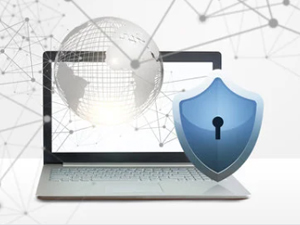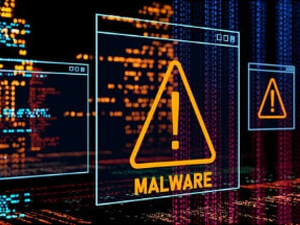Cybersecurity
Cybersecurity should be a number one priority for businesses everywhere.
With ransomware, hacks, attacks, vulnerabilities and data theft affecting companies all around the world on a daily basis, it’s just a matter of time before your business is hit. IP Services' goal is to provide you with the best cybersecurity protection possible, while also keeping your unique needs and budget in mind.
VisibleOps Cybersecurity Suite
IP Services offers a one-
Because it collects information from key information systems, this suite delivers auditability and reporting that can be customized to your specific compliance requirements if desired, and upon a best practices cybersecurity management framework.
By combining File Integrity Monitoring with Security Incident and Event Management, IP Services is able to validate the integrity of your systems and correlate breach attempts to those things that have changed on your network, devices, and servers. This provides a closed-
How Can We Help?
Protecting your information and your customers’ data is IP Services' specialty.
- Evaluate - We can evaluate your current network business environment.
- Assess - We will provide a complete assessment of your overall security health.
- Implement - Implement a complete security plan to provide a comprehensive security solution.
Our company is the leader in cybersecurity, contact us today for more information.
Cyber Security as a Service (CSaaS)

Security Monitoring & Management
- SIEM (Security Information and Event Management)
- Log Management
- Vulnerability Scanning & Patching

Endpoint Security
- EDR (Endpoint Detection and Response)
- Device Control
- Antivirus Protection
- Application Whitelisting

Network Security
- SASE (Secure Access Service Edge
- XDR
- Firewalls
- IDS/IPS
- Web Filtering
- Micro-Segmentation

Data/Cloud Security
- Data Encryption
- DLP (Data Loss Prevention)
- CASB (Cloud App Security Broker)

IAM (Identity & Access Management)
- MFA (Multi-Factor Authentication)
- SSO (Single Sign-On)
- User provisioning & deprovisioning

MDR (Managed Detection & Response)
- Proactive Threat Hunting
- Incident Analysis & Response
- Continuous Improvement

Vulnerability Management
- Asset discovery & Inventory
- Risk Prioritization
- Patch Management

Security Compliance Management
- Regulatory Compliance Audits
- Policy Development and Review
FREE REPORT
 Cyber Attack Primer
Cyber Attack Primer
Cybersecurity Protection Strategies - Engaging VisibleOps
In a world where cybersecurity threats are increasingly complex, organizations must adopt robust practices to secure their IT operations. “The VisibleOps Handbook” series produced by IP Services, in partnership with the IT Process Institute, provides a framework to address these challenges, focusing on creating transparent and auditable IT processes.
Learn more about these risks in IP Service's Free Report: "Cyber Attack Primer".
Need help? Contact us today to schedule a free consultation!
Contact us for a complimentary consultation and see how our our compliance and managed security services can help improve your company's security defenses, manage your critical line-of-business applications and address any IT problems you may be having. Let one of IP Services’ experienced sales staff assist you with your particular requirements.
